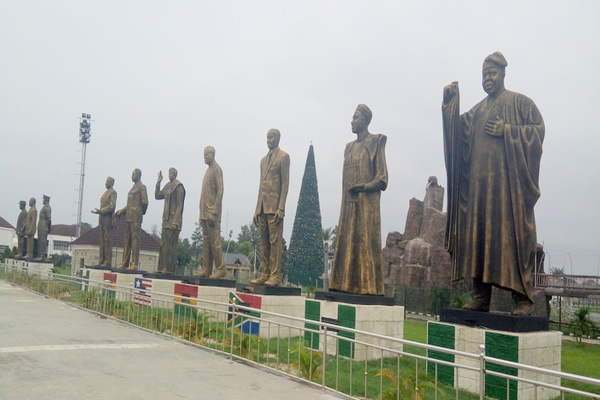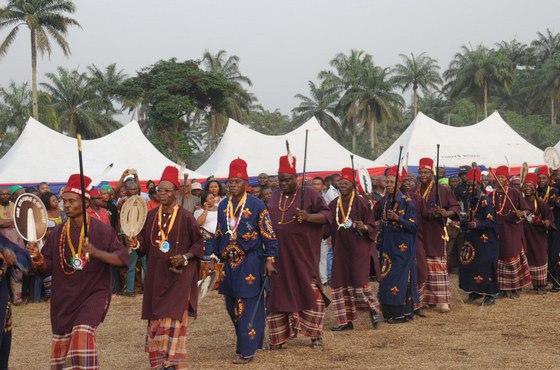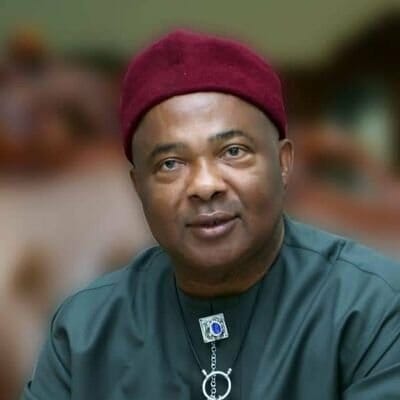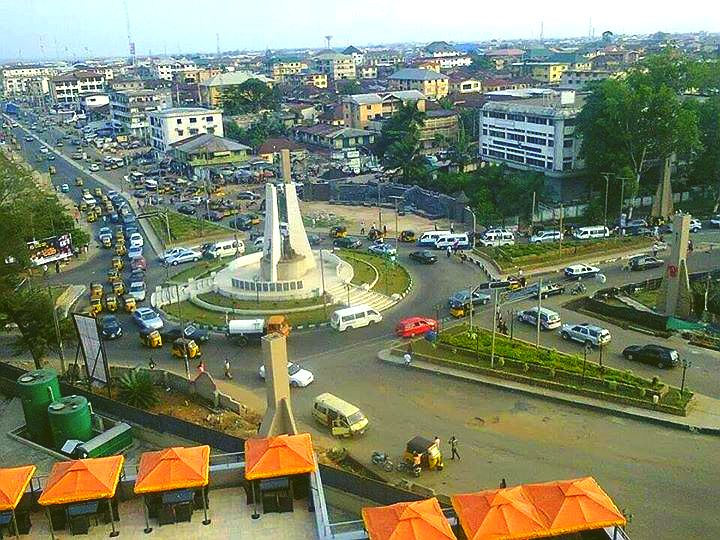Imo State, located in the South-East geopolitical zone of Nigeria, is the third smallest in the area and the fourteenth most populous state in Nigeria. Imo State, also known as Ȯra Imo in Igbo, is bordered to the north by Anambra State, Rivers State to the west and south, and Abia State to the east.
When the Nigerian civil war began in 1967, the Yakubu Gowon military authority divided what is now known as Imo State into three states, a sizable area inside the boundaries of the former Eastern Region. History has it that the majority of the native Igbo inhabitants of the Imo region were farmers who raised a range of cash and food crops, including palm fruit, one of Nigeria’s main export products at the time of independence.
However, 40 years later, Imo has transformed from a sizable farmstead to a single city-state, and that’s thanks to the people’s perseverance. Geographically, the state is divided between the drier Cross-Niger transition woods in the centre and the swamp forests of the Niger Delta in the extreme east. The state’s rivers and lakes, including the Oguta Lake in western Imo State and the Awbana, Imo, Orashi, and Otamiri rivers, are further significant geographical features.
In this piece, Naijabiography narrates the history of how the Imo state was created and the culture, trade and economy of the Imo State people.

History
According to the history documented by the people of Imo, the state is one of the seven states established by the Federal Military Government on February 3, 1976, under the Murtala Muhammad administration. Research reveals that the region that is today known as Imo State was once a part of the now-defunct East Central State, one of the twelve states that the Federal Military Government (General Yakubu Gowon’s dictatorship) initially established in 1967.
Although Abia State was separated from Imo State as part of General Ibrahim Babangida’s formation of additional states in 1991, thus, twenty-seven local government areas (LGAs) and three senatorial zones make up the new Imo State.
Meanwhile, before the Aro Confederacy was vanquished by British forces in the early 1900s during the Anglo-Aro War, what is now Imo State was a part of the medieval Kingdom of Nri and the subsequent Aro Confederacy.
Following the war, the British annexed the region and turned it into the Southern Nigeria Protectorate, which then united with British Nigeria in 1914 and turned Imo into a focal point of the Women’s War’s anti-colonial resistance.
The current state of Imo was a member of the Eastern Region upon independence in 1960 until the region was split in 1967, at which point it became a component of the East Central State. Less than two months later, as part of the secessionist, Igbo nationalist state of Biafra, the former Eastern Region sought to separate from Nigeria during the three-year Nigerian Civil War.
Later, Owerri and its surroundings changed hands twice throughout the war before Owerri was designated the Biafran capital in 1969. The area was fiercely contested during the conflict. When Operation Tailwind took the city and put an end to the conflict in early 1970, Imo State as it is known today was taken by federal forces.
However, following the end of the war and the unity of Nigeria, the East Central State was rebuilt until the Murtala Muhammed administration created Imo State in 1976. After fifteen years, Imo State was split in two, with the eastern portion becoming the new Abia State.
Reports gathered revealed that in Imo State when the civilian rule had not formally commenced, there were significant impacts with the assistance of a few civilian leaders, which existed for 23 years of the 40 years of the creation. During this period, there were four prominent civilian governors namely; Samuel Onunaka Mbakwe (October 1, 1979 – December 31, 1983); Evan Enwerem (January 1992 – November 1993); Achike Udenwa ( May 29, 1999 – May 29, 2007); Ikedi Ohakim (May 29, 2007 – May 29, 2011) and the incumbent Owelle Rochas Okorocha (29 May 2011 – 2020), contributed to the recreation and development of Imo State.

People and Culture
According to research, the population of Imo State is about 5.4 million as of 2016, and the majority of its inhabitant are Igbo people who speak the Igbo language and English (most times pidgin English), which is the universal language in Nigeria. Furthermore, the culture of the Imo people is homogeneous in nature as a result of the Igbo language, although with differences in dialects.
Just like every other state in Nigeria, Imo State has a rich cultural heritage cutting across the people’s modes of dressing, songs, festivals, foods, dance, arts and crafts, etc. Also, research affirms that the Imo State people are predominantly Christians, and they are mostly Catholics, though some people still practice their traditional religion.
Furthermore, other cities and towns that exist in Imo State include Owerri, Mbaise, Orlu, Oguta, Okigwe, Uzoagba, Emekuku, and Mgbidi Nkwerre, Agu, Orie, Obowu, Ideato etc.

Economy
The state’s economy is heavily reliant on agricultural production, particularly the production of palm oil, which is used for cooking by the majority of people. The majority of the population invests in agriculture; the main income crops are yams, taro, corn (maize), rice, and cassava (manioc). Also, the production of crude oil and natural gas, particularly in Imo’s north and west, is a significant minor business.
Furthermore, the state contributes to the economic development of the country through its natural resources. The natural resources found in the state include crude oil, natural gas, lead, calcium carbonate, solar and wind energy, zinc, and crude oil. In addition, Iroko, mahogany, obeche, bamboo, rubber trees, and oil palm are among the lucrative plants. The state also has limestone, fine sand, and white clay.
According to research, the state has over 163 oil wells at over 12 different locations in the state. Thus, the main petroleum companies operating in the state are Addax Petroleum, Chevron Corporation, Royal Dutch Shell and Agip. Moreover, some of the established oil-rich local government councils include Ohaji/Egbema, Oguta, Oru East, Iho, Oru West, Obowo and Ngor Okpala.
Additionally, the Imo State capital, Owerri is a manufacturing and educational hub for drinks, galvanized sheet iron, leather goods, and soap.

Political Structure
The state has a three-tier administrative structure: State, Local and Autonomous community levels. The state is headed by an elected governor; the present governor of Imo State is Hope Uzodinma, who was sworn in on January 15, 2020, under the banner of the All Progressives Congress.
The legislative arm is headed by the Speaker of the State House of Assembly; the current Speaker of the house is Rt. Hon. Chiji Collins, while his deputy is Hon. Okey Onyekamma.
Furthermore, Imo state comprises 24 local government areas including Aboh Mbaise, Ahiazu Mbaise, Ehime Mbano, Ezinihitte Mbaise, Ideato North, Ideato South, Ihitte/Uboma, Ikeduru, Isiala Mbano, and Isu, among others.

Modern-Day Imo State
The #ENDSARS protest was one of the most notable riots to occur in Imo state, which resulted in property destruction. This nonviolent demonstration spread beyond Imo state and resulted in rioting, the destruction of police stations, and the deaths of security officers.
However, there are some tertiary institutions in Imo state which are; Federal Polytechnic, Nekede, Federal University of Technology Owerri, Hezekiah University, Umudi, Imo State University, Owerri, and Imo State Polytechnic, Umuagwo. Imo State also has colleges of education and secondary schools.
Some notable people in Imo State include Chioma Ajunwa (1996 Olympic gold long jumper), Charly Boy (hip hop singer and activist), Rita Dominic (Nigerian actress), Prince Eke (Nollywood actor), Ada Jesus (Nigerian actress and comedienne), Genevieve Nnaji (Nollywood actress), Onyeka Onwenu (singer, actress and politician), Sam Mbakwe (former Governor), and Chris Anyanwu (journalist and senator), among others.





